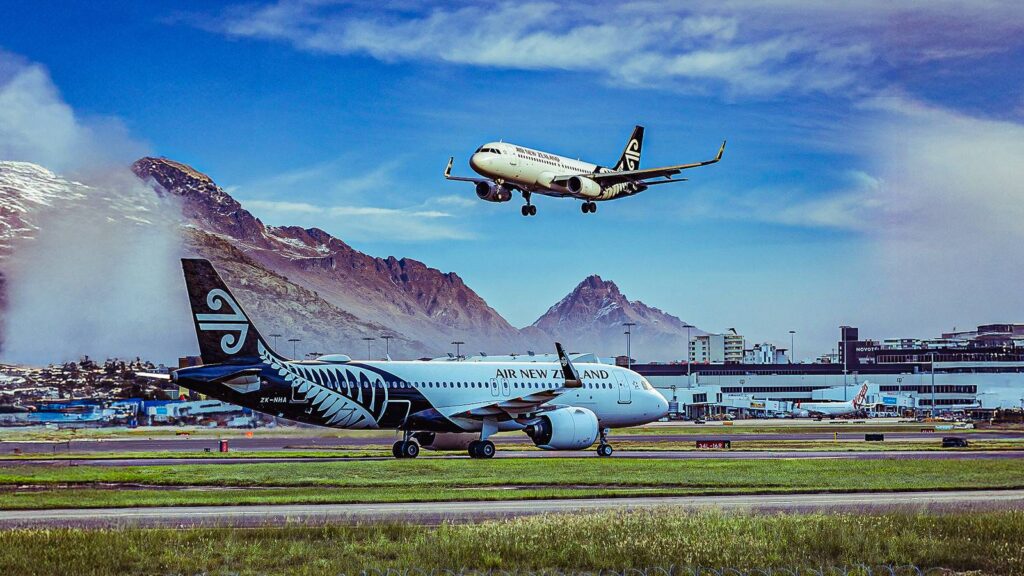
A scheduled Air New Zealand flight between Christchurch and Sydney was forced to make an emergency landing on Friday, October 24, after experiencing a hydraulic failure mid-flight. The incident occurred as the Airbus A320neo, operating as flight NZ211, was halfway across the Tasman Sea.
Emergency services at Sydney Kingsford Smith Airport, Australia’s busiest airport, were on standby and met the aircraft upon its arrival. The plane landed safely, and emergency crews, along with an engineering team, immediately assessed the situation. A thorough inspection is now underway to ensure the aircraft’s safe return to service.
Hydraulic Failure Over The Tasman Sea
The flight departed from Christchurch Airport at 06:56, slightly delayed from its scheduled departure time of 06:35. With a block time of three hours and 35 minutes, the service was expected to arrive in Sydney at 08:15. However, mid-flight, the pilots identified a hydraulic failure, prompting the emergency landing.
With no major diversion airports available between Australia and New Zealand, the aircraft continued to Sydney, landing at 08:17. Emergency crews met the plane with lights and sirens, and passengers remained calm throughout the ordeal. The aircraft stayed on the apron for up to two hours as engineers conducted initial assessments before towing it to the gate.
“Emergency services met the aircraft on arrival as a precaution. The aircraft landed safely, and our engineering team will now carry out inspections to ensure the aircraft is safe to return to service,” explained Nathan McGray, Air New Zealand Chief Safety and Risk Officer.
Mid-Flight Notification and Passenger Impact
The Airbus A320neo, registered as ZK-NHC, can seat up to 165 passengers in a single-class configuration. Passengers on NZ211 were informed of the technical issue mid-flight and briefed on emergency procedures. At the time of writing, the aircraft remains on the apron in Sydney, awaiting clearance to return to scheduled service.
The incident led to the cancellation of the corresponding flight from Sydney to Queenstown, NZ232. Affected passengers were rebooked onto alternative services via other Air New Zealand hubs, such as Auckland and Wellington Airports.
Data from ch-aviation identifies ZK-NHC as a six-year-old Airbus narrow-body aircraft, delivered to Air New Zealand in March 2019. Designed for short-haul international operations, the aircraft features seat-back entertainment for all passengers. Air New Zealand offers three fare types on these flights: seat only, ‘The Works’ (including movies, meals, and baggage), and Works Flexi, which provides additional flexibility.
Leadership Changes at Air New Zealand
This incident comes as Air New Zealand welcomes a new Chief Executive Officer, Nikhil Ravishankar, who transitioned from his role as Chief Digital Officer. Ravishankar has been with the airline since 2021 and has played a key role in enhancing its digital platforms.
In his first month, Ravishankar suggested to Radio New Zealand that the airline may need to consider situational subsidies to maintain its full network of domestic routes. Earlier this year, the airline canceled its Wellington to Invercargill route due to economic challenges. Ravishankar highlighted the ongoing pressures of rising jet fuel costs, wages, and other factors that have led to increased airfares.
To counteract these challenges, Air New Zealand is exploring options such as variable redemption, where discounted flights would not earn airpoints, and increasing domestic flights during off-peak times. The airline, 51% owned by the New Zealand Government, is projected to report a first-half loss of up to $31 million (NZ$55 million), attributed to lower passenger numbers and higher operational costs.
As Air New Zealand navigates these operational and financial challenges, the safe resolution of the recent emergency landing incident will be a priority, ensuring passenger safety and confidence in the airline’s services remain paramount.






